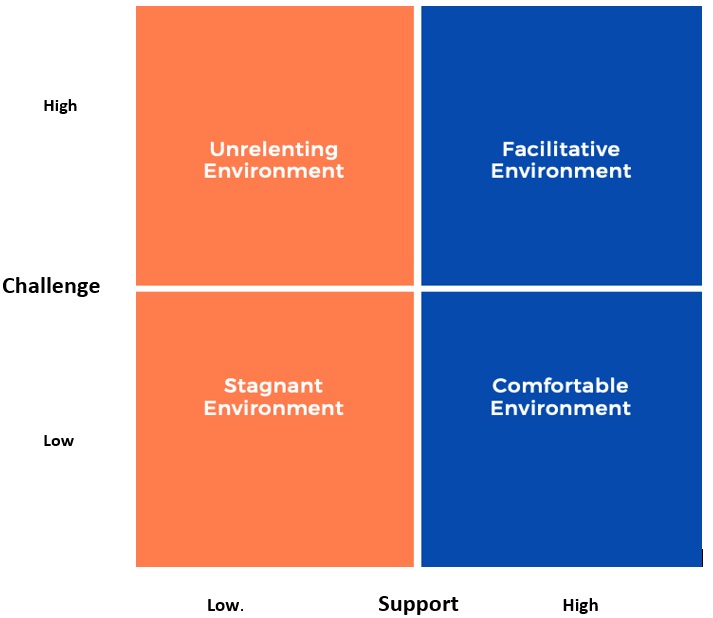Motivating players
Motivating your players is a key part of coaching and while there isn’t one unique way to stimulate your team, a few principles are important to keep in mind.
Not all motivational techniques will have positive results, for instance assertively pushing players to work harder or be more focused might not have the desired impact and might create division between the coach and players.
Considering the players’ response to stress and as the level of demand on players increases, it is important to match that with increased support from coaches and peers, to remain in the Facilitative Environment shown in the Challenge Support Matrix (Reference 3).

- Unrelenting: Can be inflexible, uncompromising, lacking in empathy, kindness or compassion.
- Facilitative: Supportive yet challenging. Individuals work toward clearly defined goals. There is a chance for growth, change and self-discovery.
- Stagnant: Dull, sluggish, static environments, lacking in challenge or support.
- Comfortable: Easy, can be enjoyable yet lack the challenge needed for growth or performance.
Tips on creating a Facilitative Environment:
- Recognize effort and resiliency more than achievement.
- Invite players to set the goals.
- Assess and revise the goals regularly to ensure that they are inspiring and achievable.
- Emphasise players’ role on the team, as opposed to highlighting their individual accomplishments. (“I notice how you work hard to anticipate opportunities and be in the right place to finish our breaks” is more affirming than “Wow! Three tries today? You’re a star!”)
- Give negative feedback separately, not in front of the team, as that could impact the sense of value in the group.
- Give negative feedback as a “sandwich”, with positive messages before and after the corrective feedback. E.g., “I see your efforts to pass to players in open space and I commend you for seeing those opportunities. Sometimes you are trying to make passes that are outside of your current range, and those are leading to lost possession. I believe that you can use your vision of the field and help the team more if you pass within your range, which we can extend at practices.”
- Highlight positives with questions such as “What are you most proud of from practice today?”.
- Create challenges within the team that build competition while not undermining team unity.
